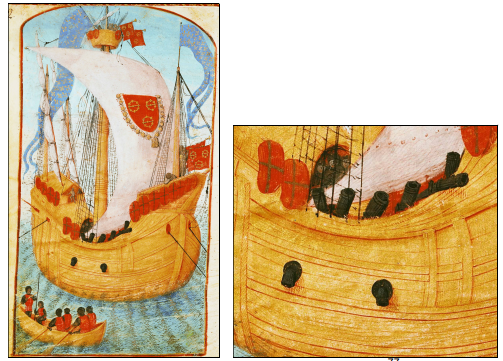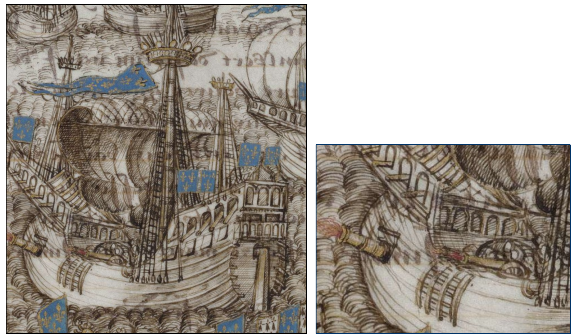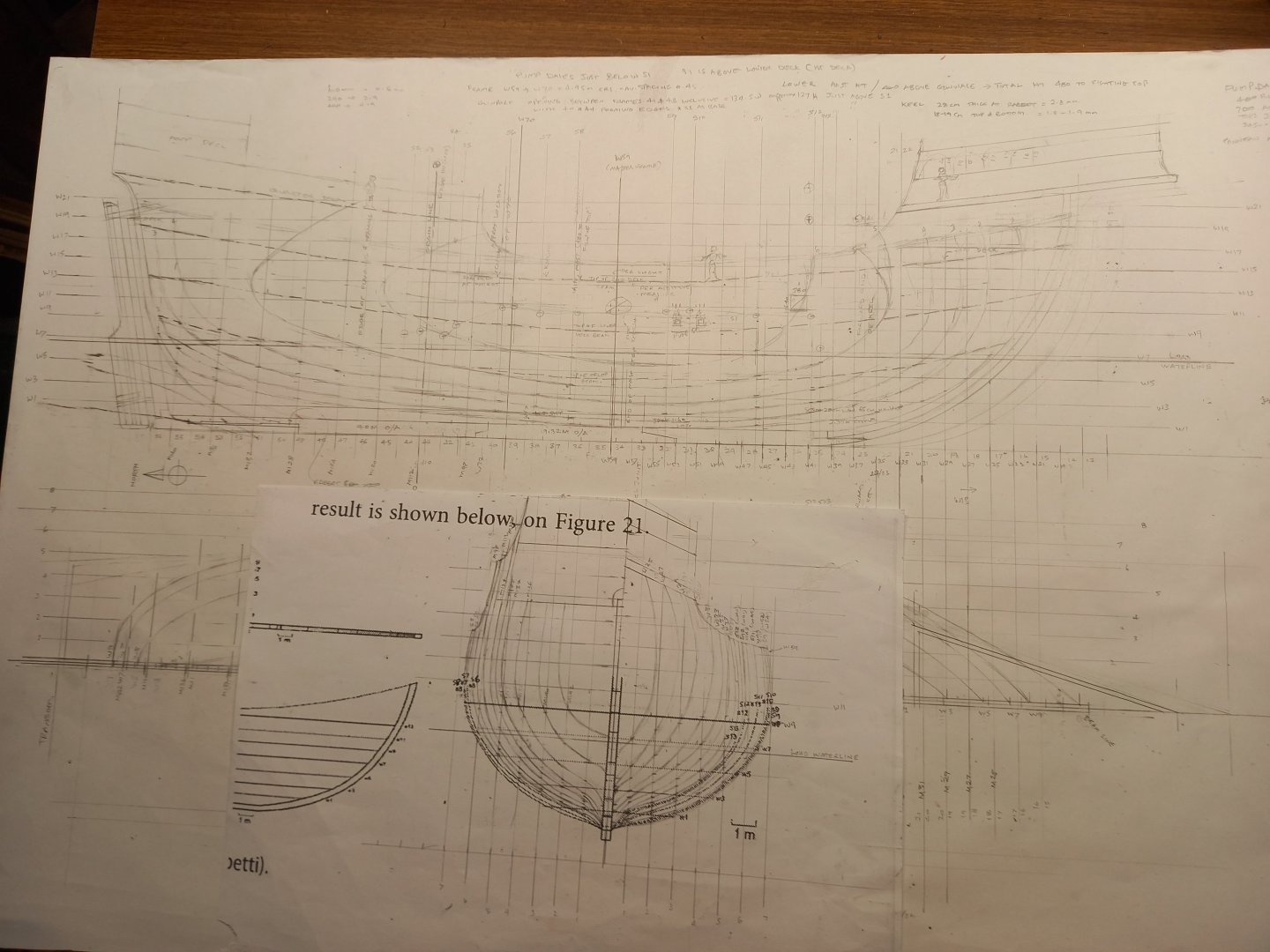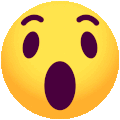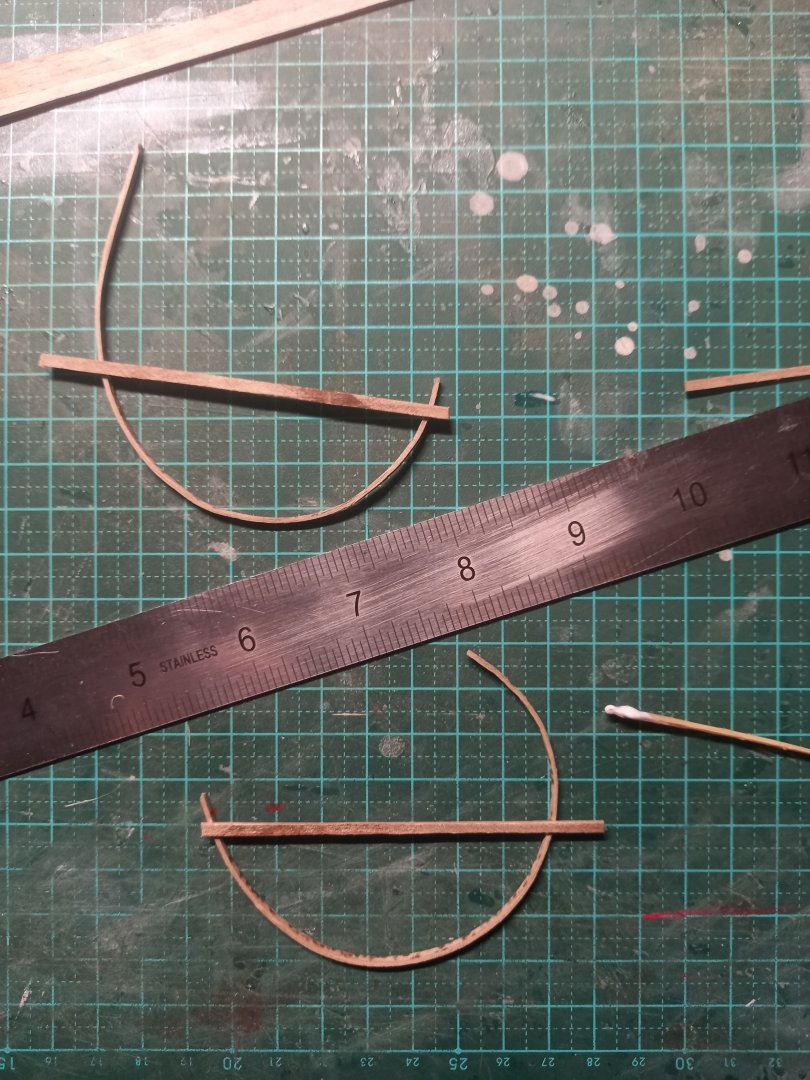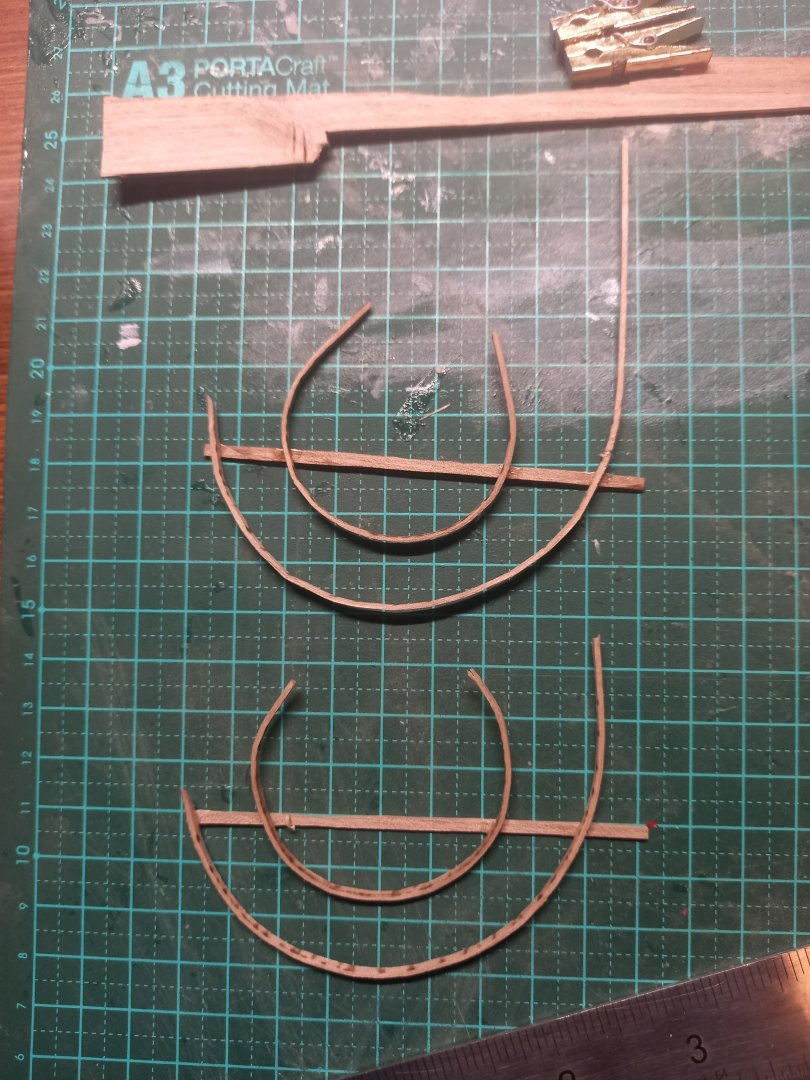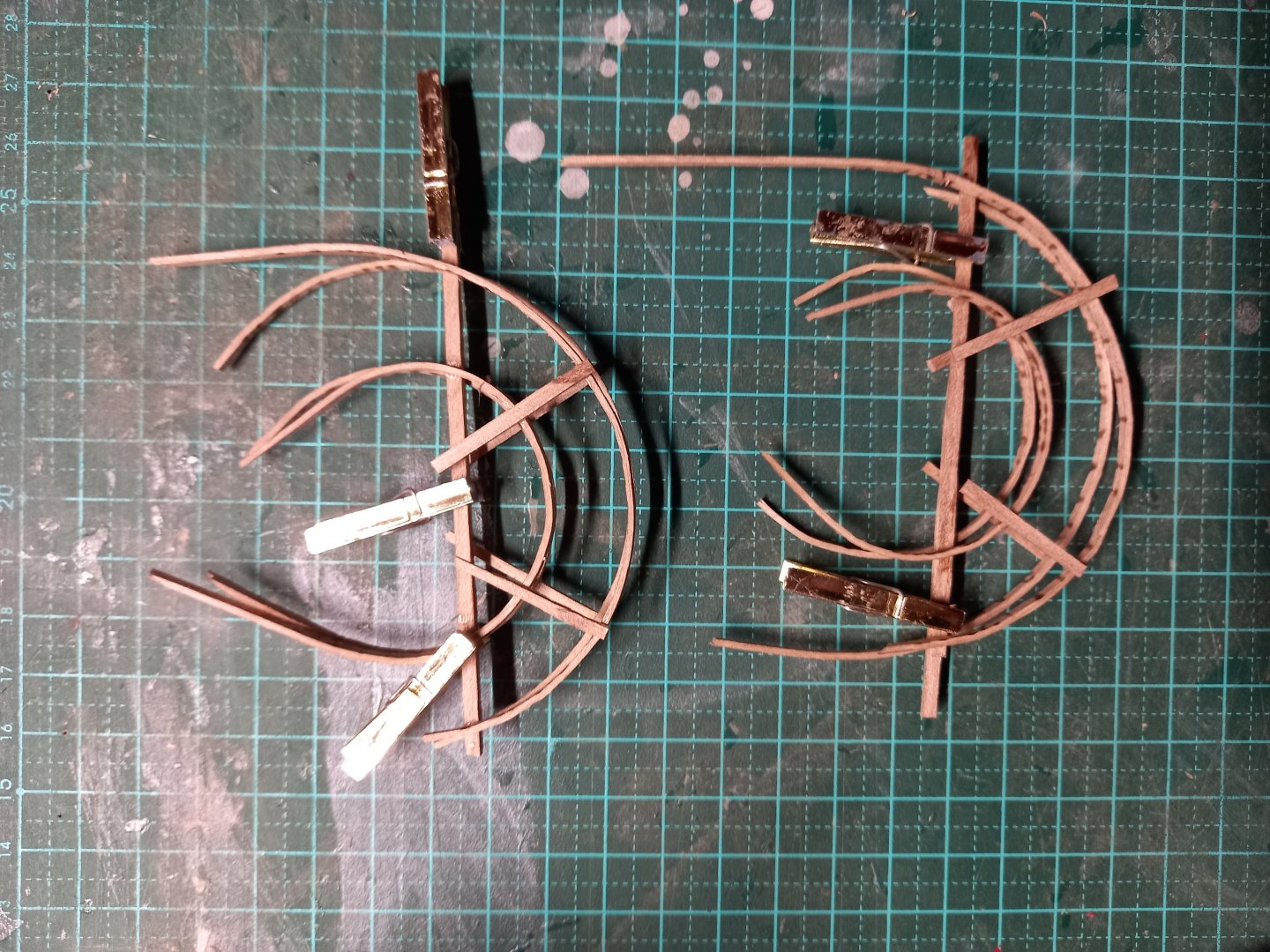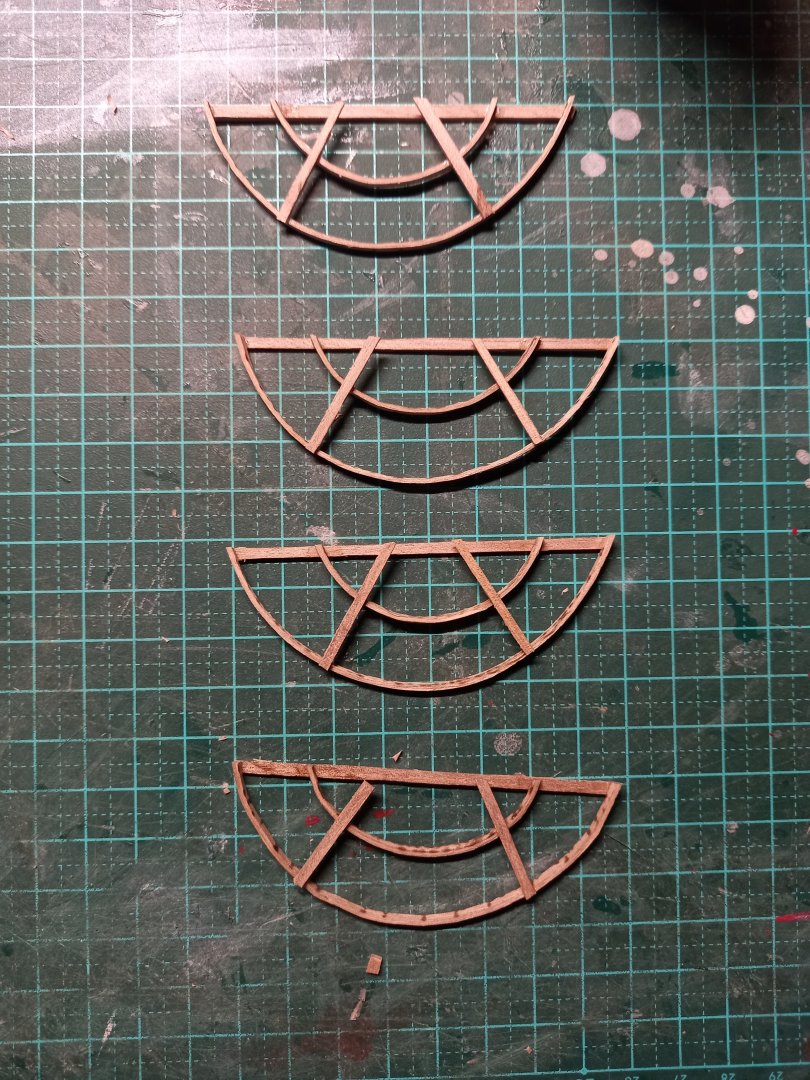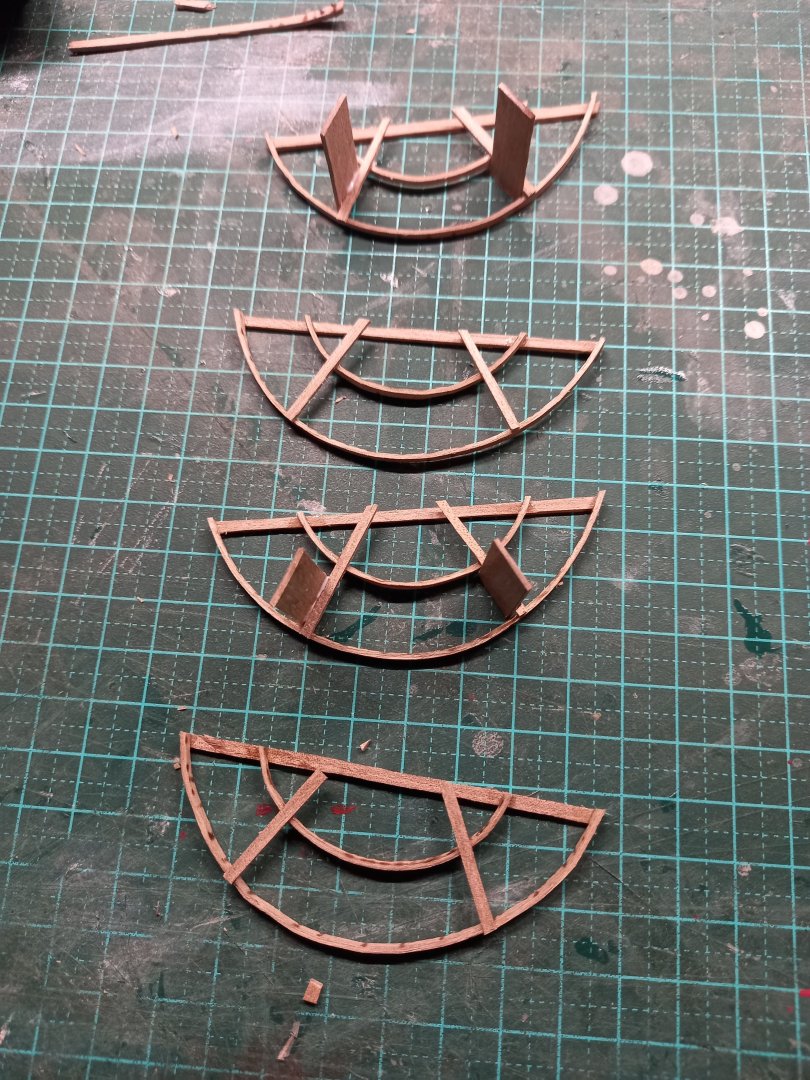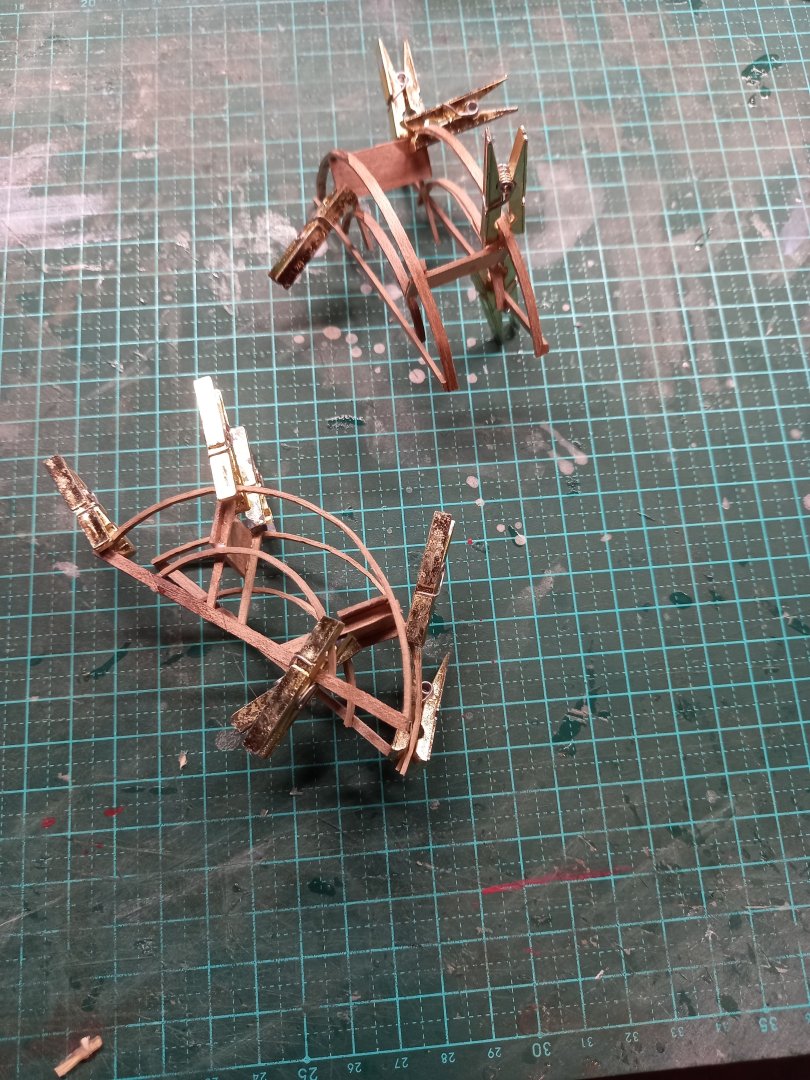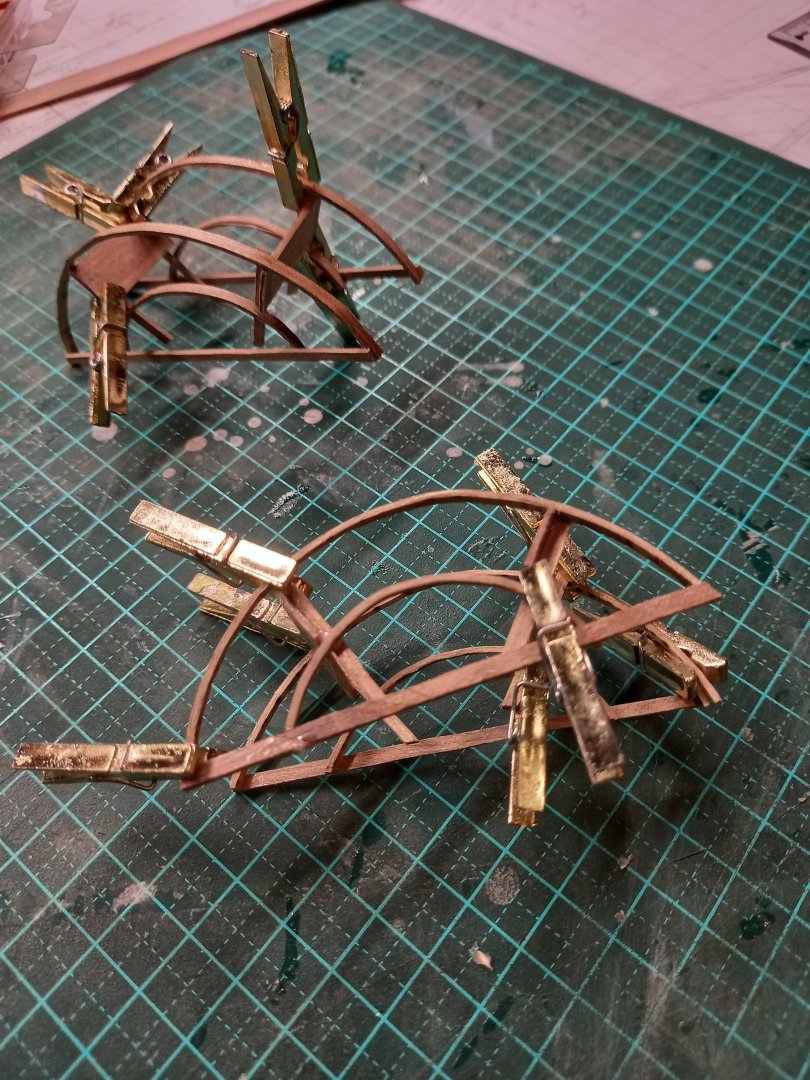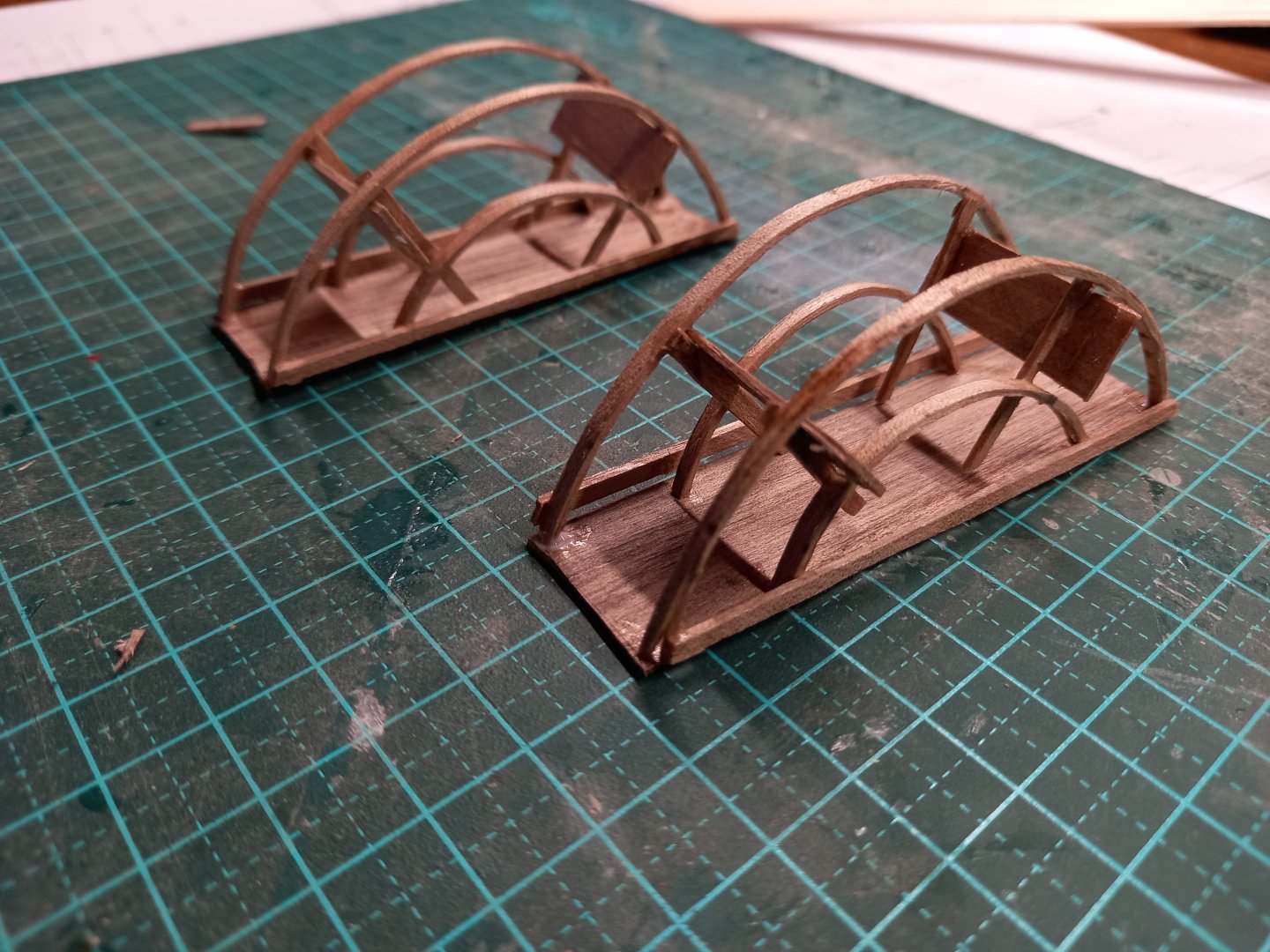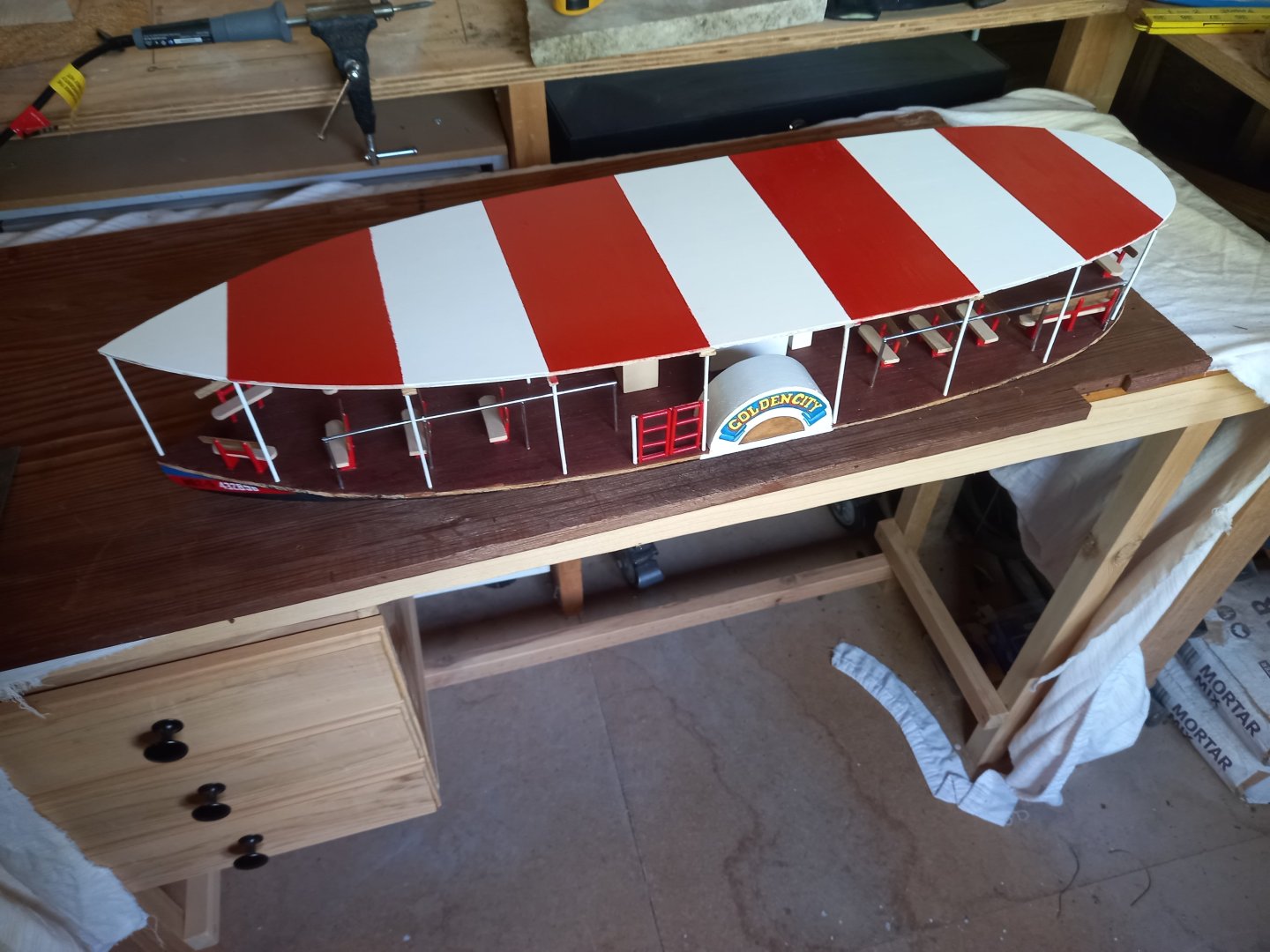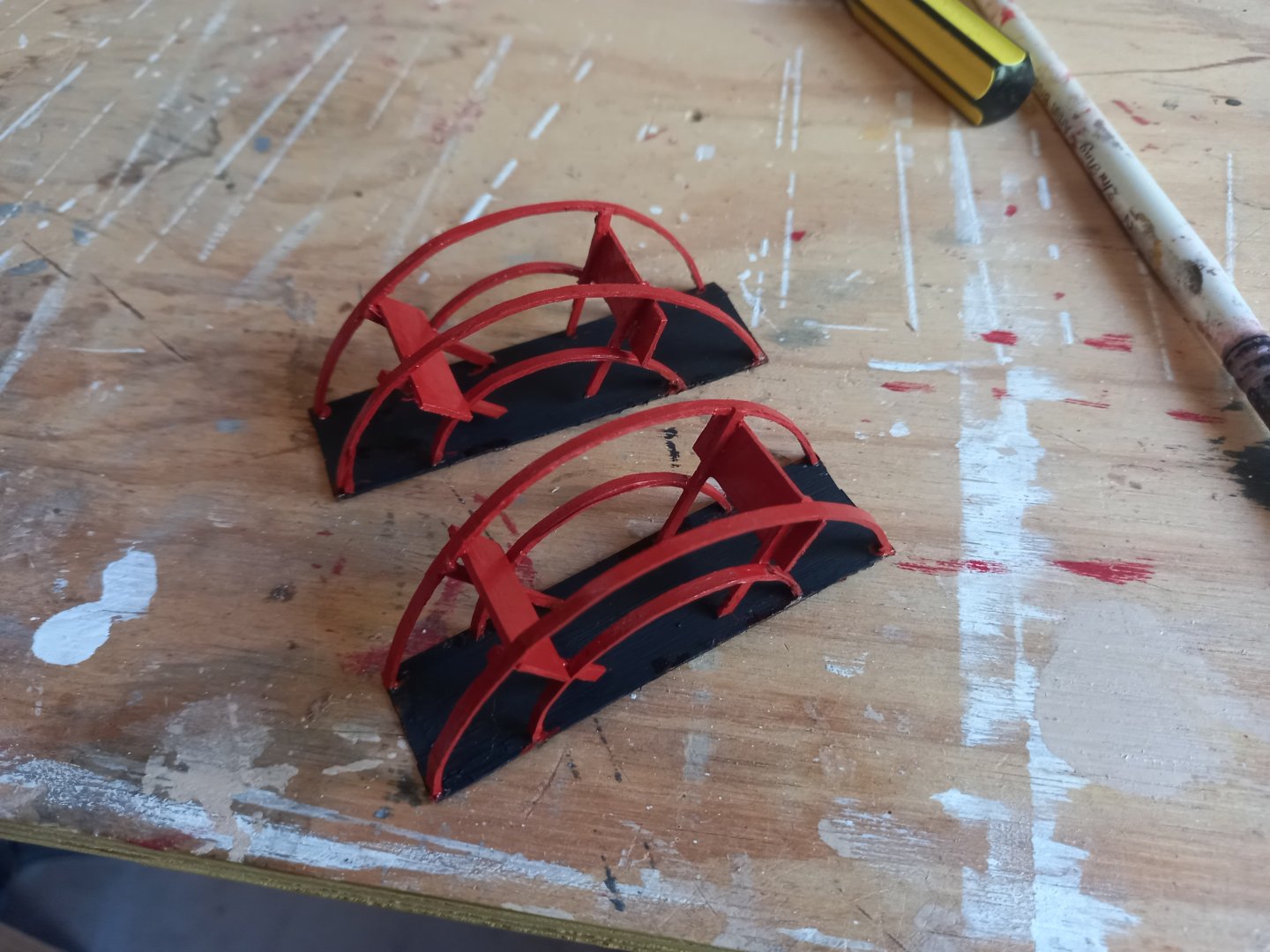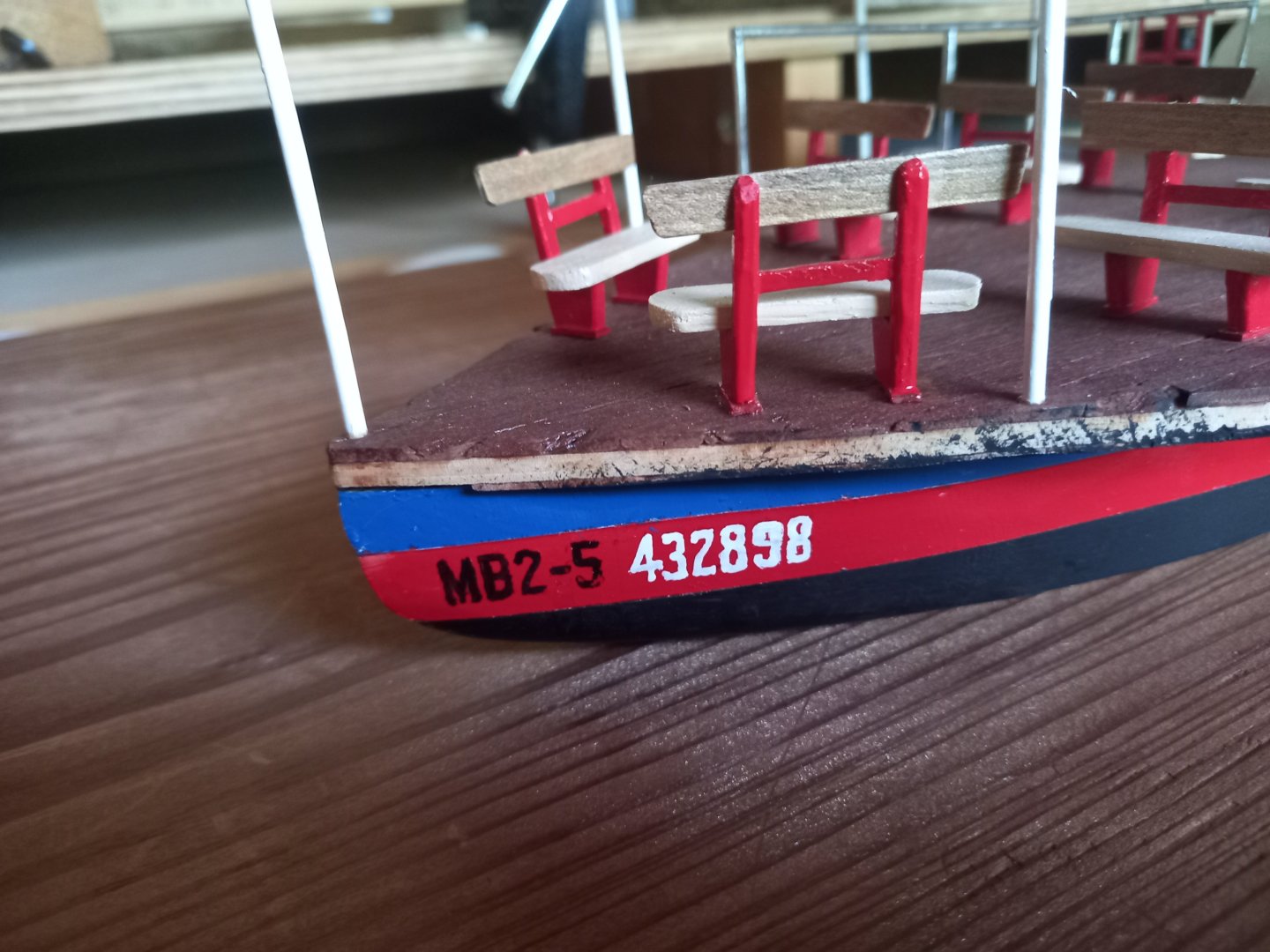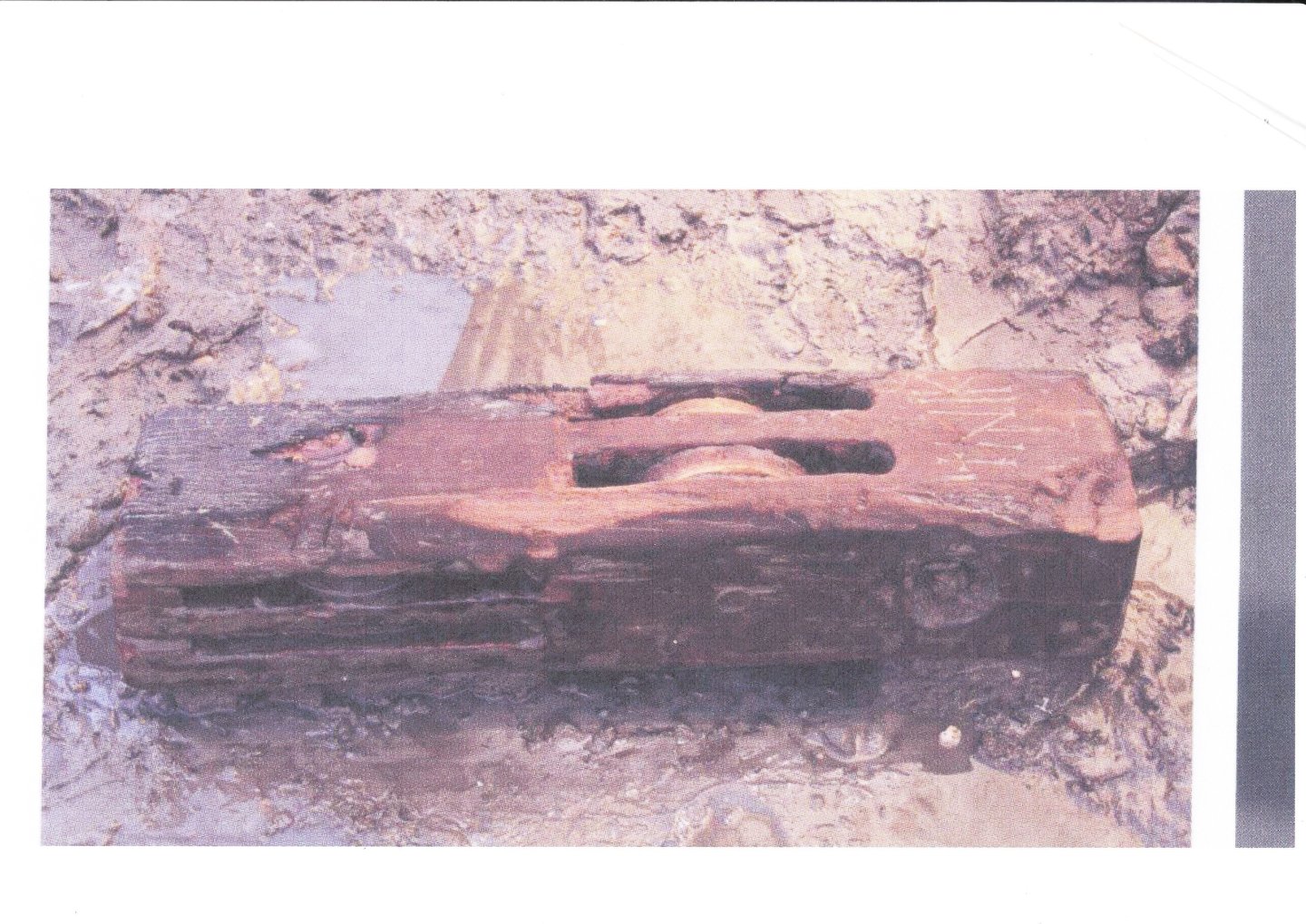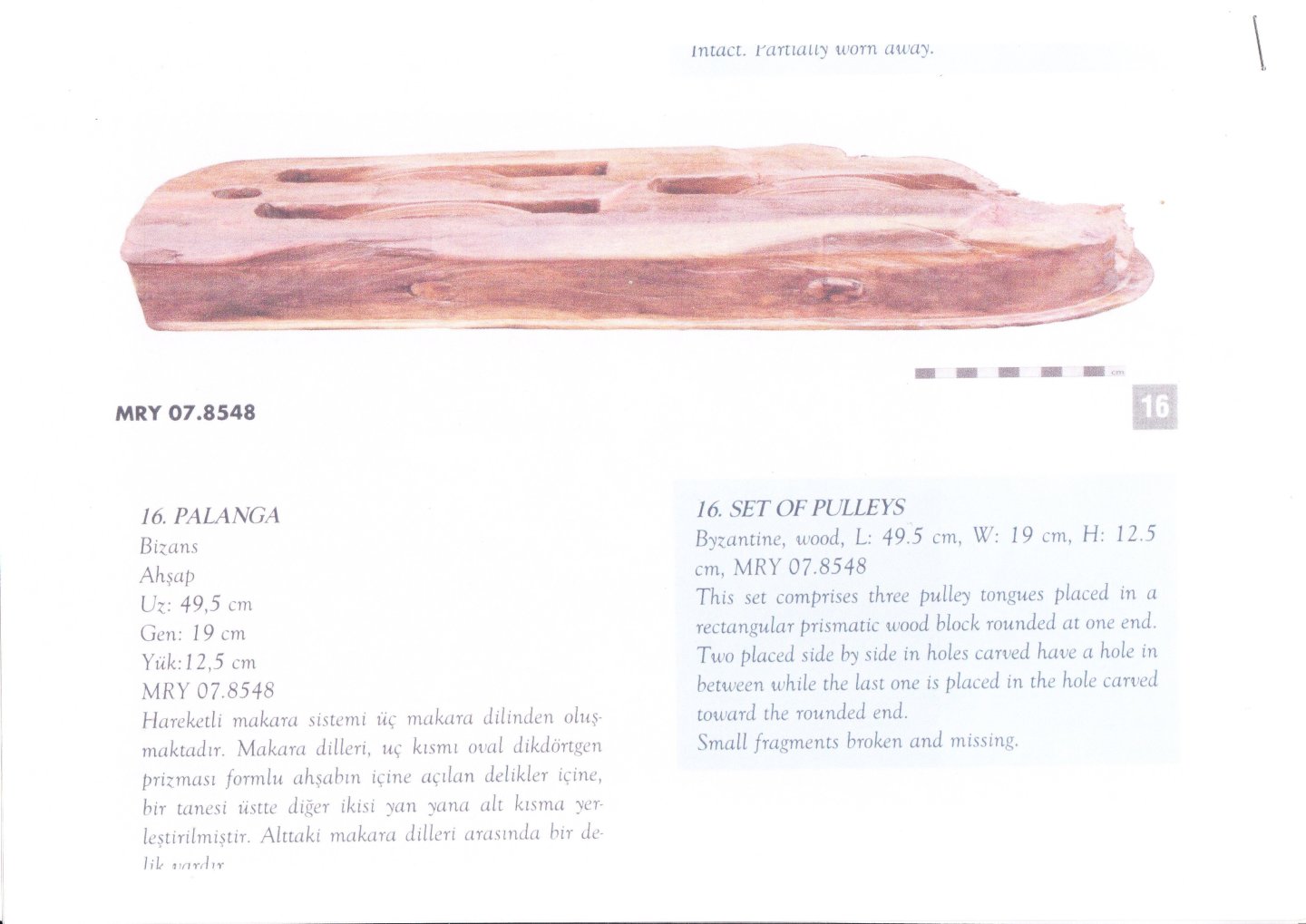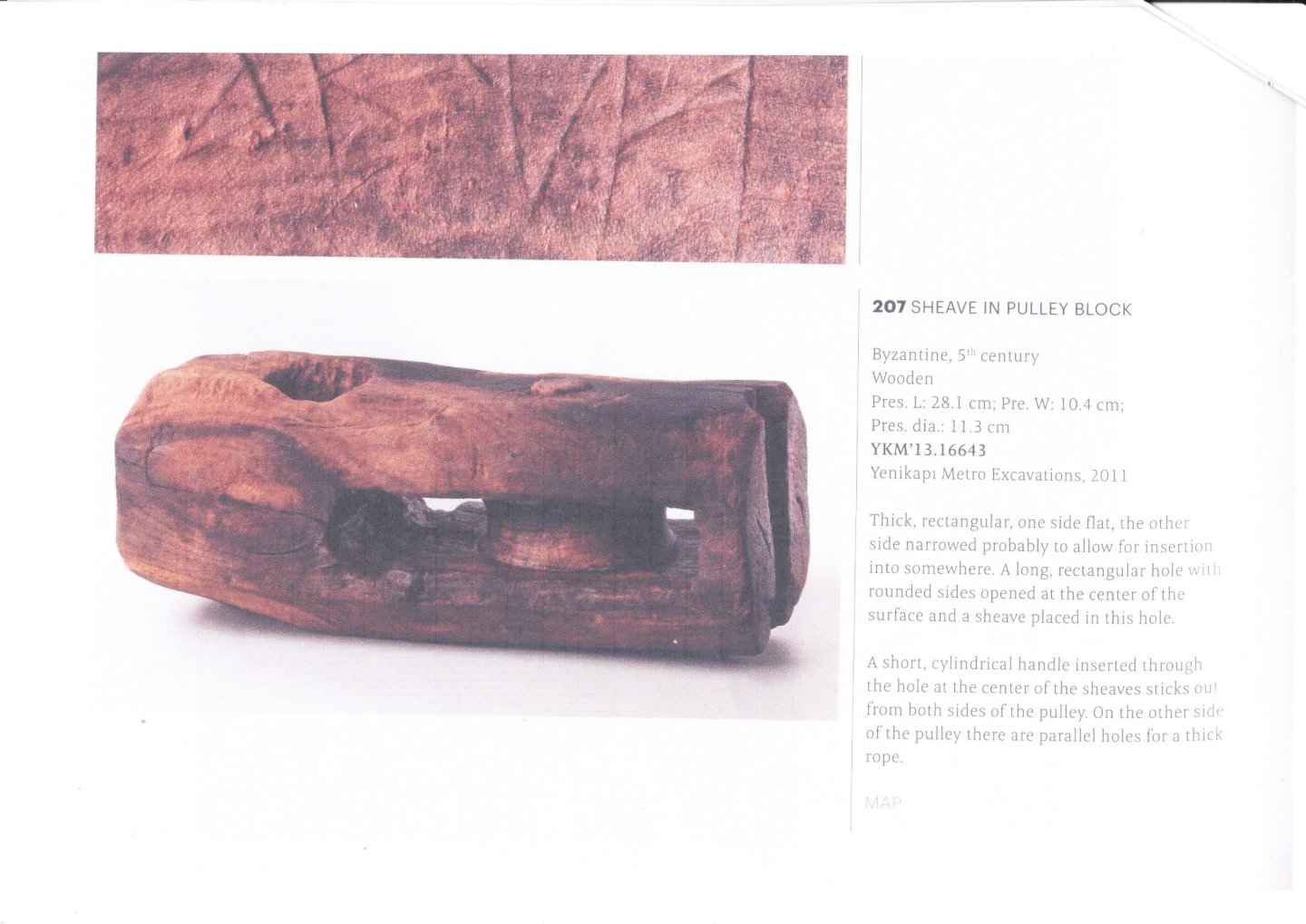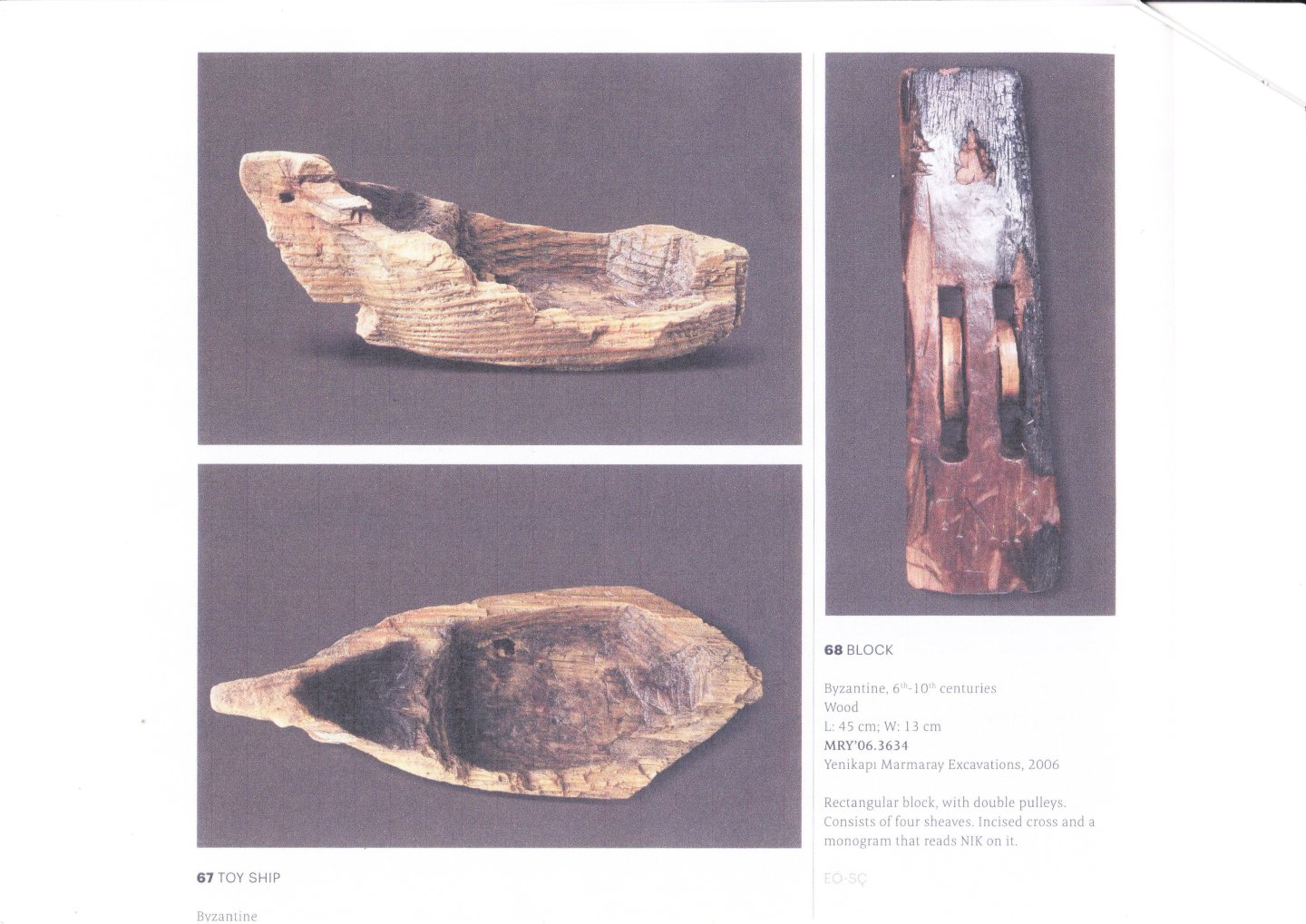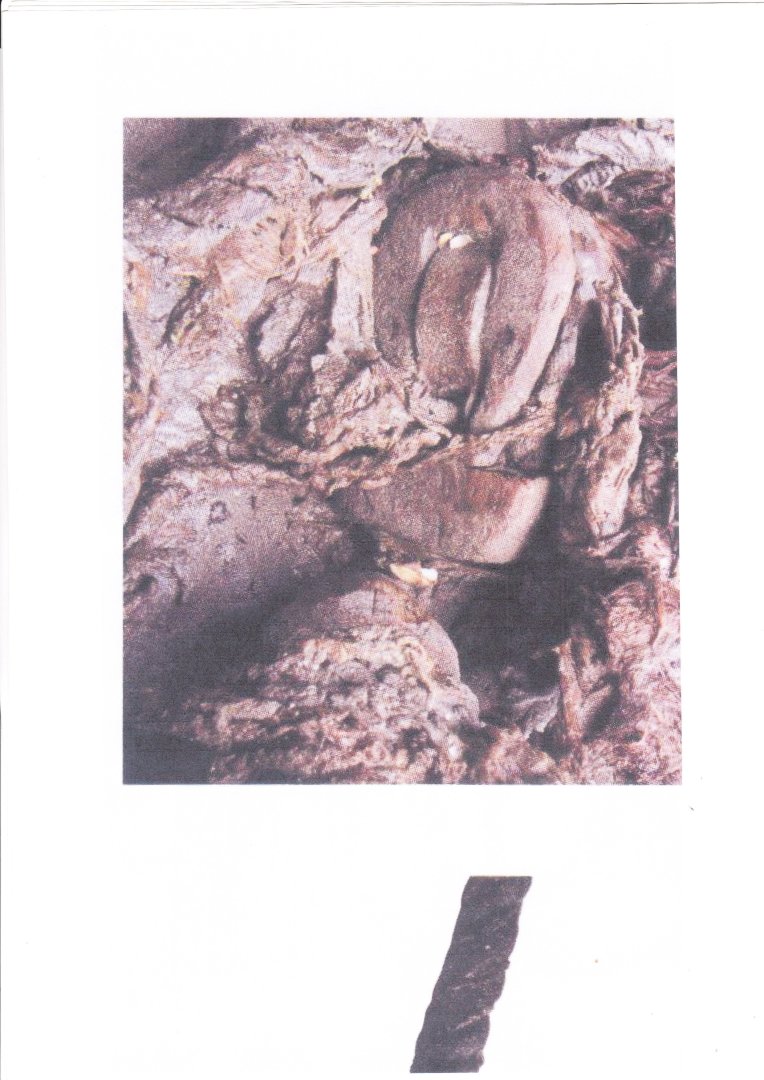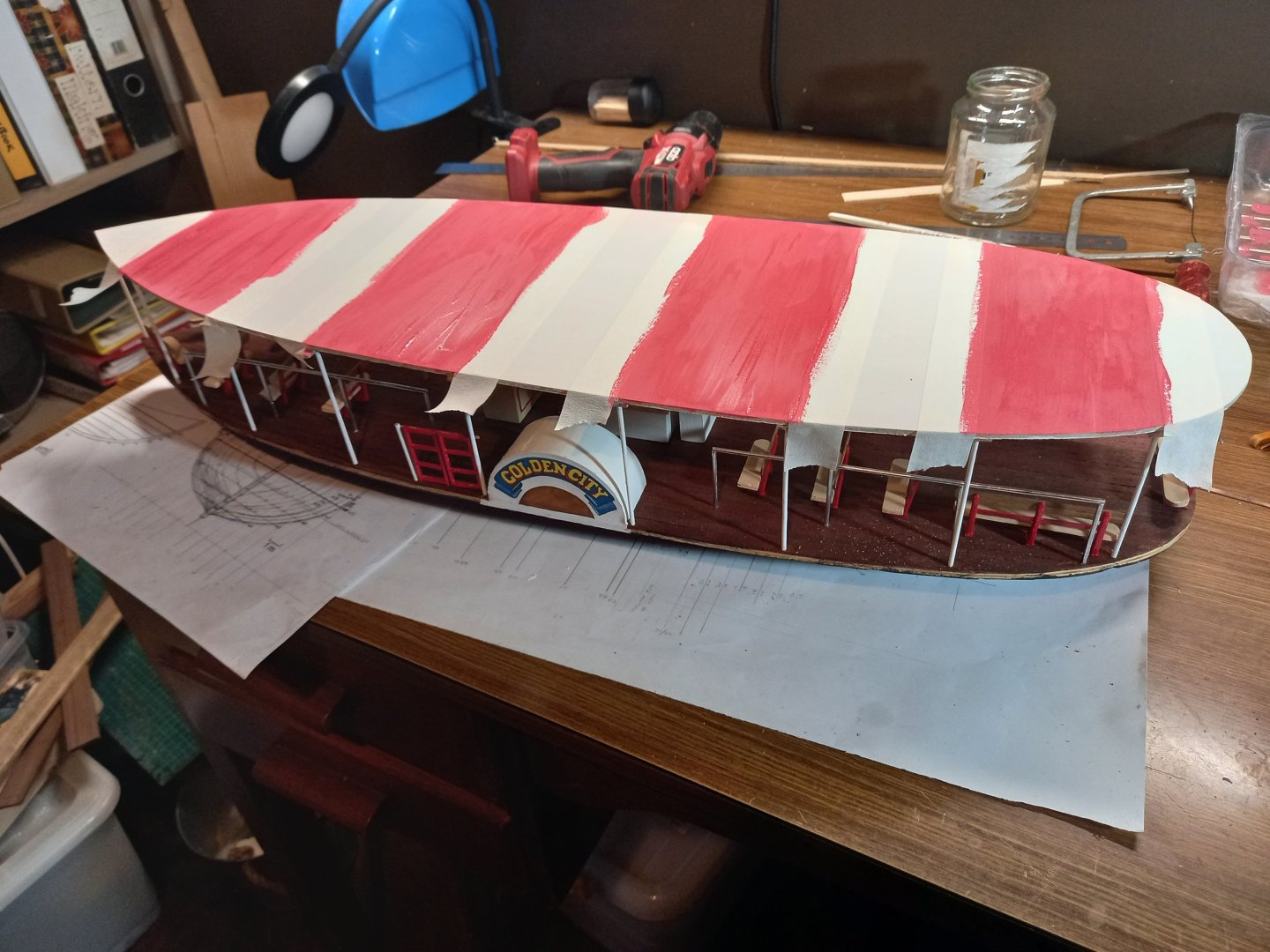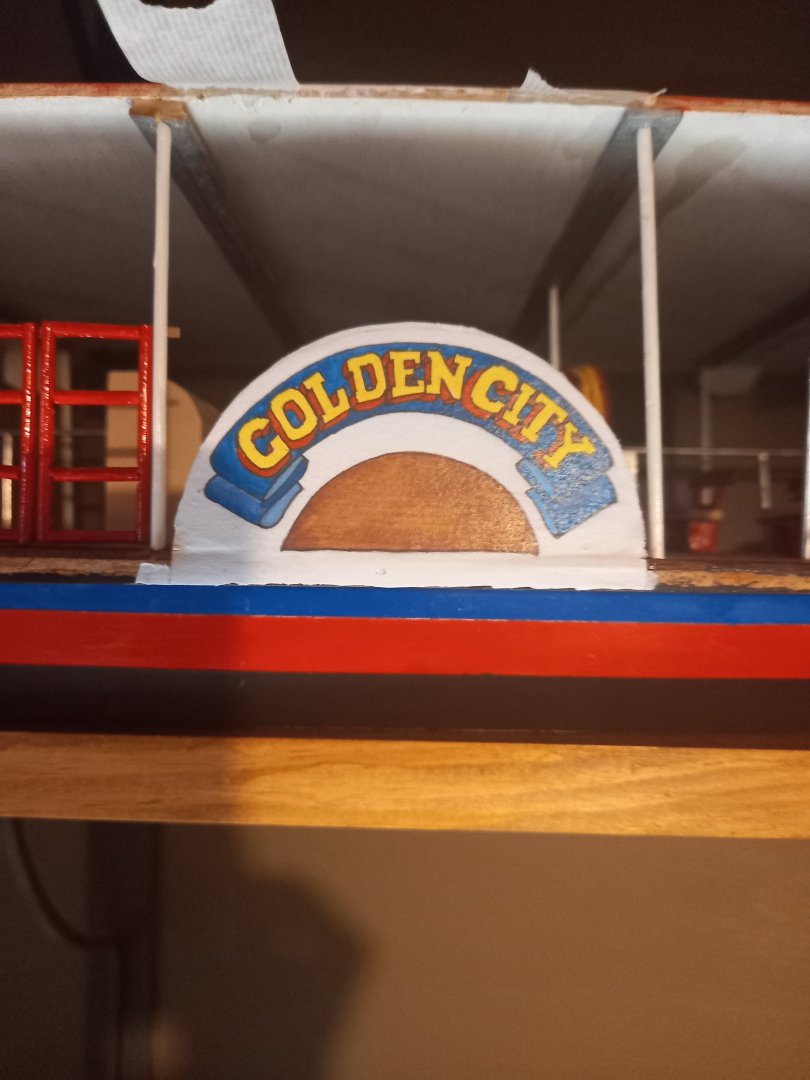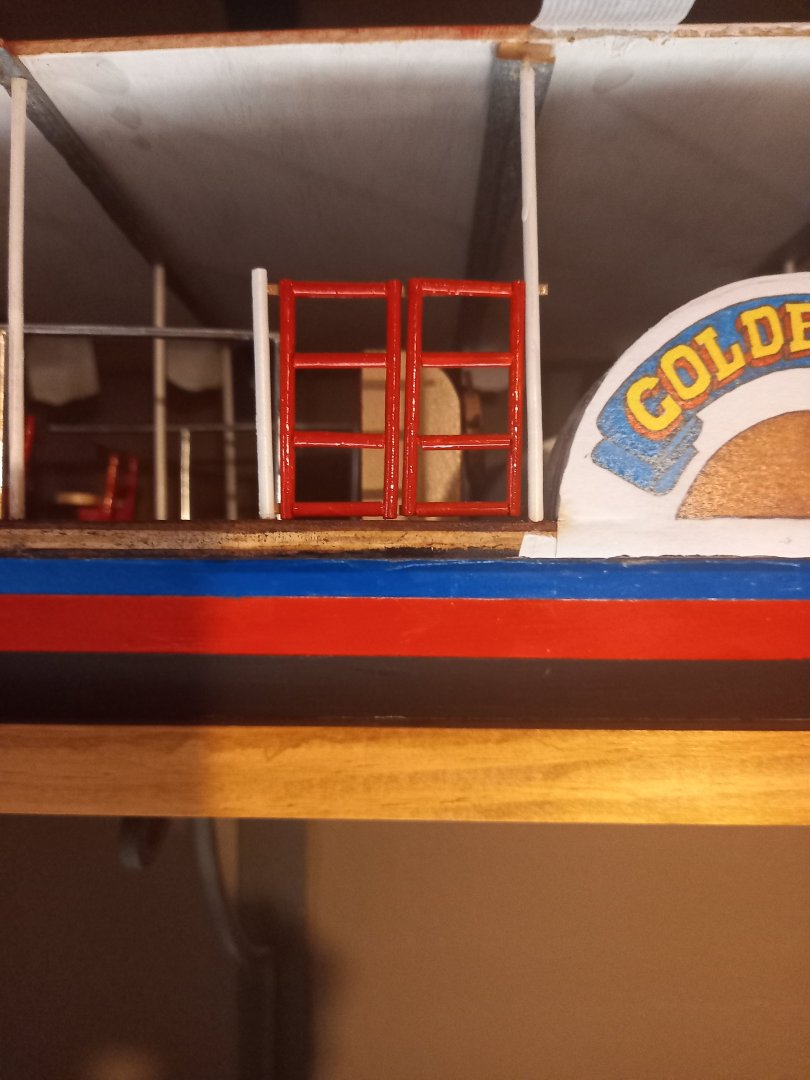-
Posts
7,973 -
Joined
-
Last visited
Content Type
Profiles
Forums
Gallery
Events
Everything posted by Louie da fly
-
Thanks everybody for the likes and comments. Firdajan, yes archery was still an important part of the armament of the Mary Rose - in fact I've seen some of the bows in the museum where she's held - along with all kinds of other interesting artefacts including a beautiful parrel truck and a complete fighting top. Back then they were still thinking more in terms of hand-to-hand combat than gunfire, which is why the Mary Rose had such a tall forecastle and aftercastle - to make boarding difficult for the enemy. Tony, thanks. Yes, I'd had no idea that there was this period where they were very wary about installing gunports - I thought artillery went straight from gunwale-mounted to long ranks of gunports. But it's very understandable when you consider the problems that had to be overcome before they could become an integral and usual part of a ship's armament. Mikki, I'm glad you liked it. I do enjoy sharing these discoveries with my fellow enthusiasts. Steven
-
Yes, I'm still trying to work out the best way to do it. Scissors don't come with that profile, unfortunately (though they do for half the scale, so long as it's paper you want to cut). I'm thinking mainly of fabric impregnated with paint, and cutting carefully with a craft knife or similar. Or perhaps silkspan . . . As it's by a lake, I have to think about the effect of moisture. Steven
- 110 replies
-
- Paddlewheeler
- Ballarat
-
(and 3 more)
Tagged with:
-
Well, I'm very chuffed. In response to a request from me for a bit more information and a clear photo of an 'arquebus' (precursor of the musket) found on the Lomellina, Max Guérout sent me a thoroughly researched and incredibly comprehensive paper he'd written, covering not only the guns found on the wreck, but every type of gun in common use at the time, with photos, technical drawings, construction analyses, you name it. 108 pages long. But all in French. Fortunately, Google Translate has come a long way since I first started using it, and despite the occasional howler of a translation, that plus my own schoolboy french was very useful in getting the full sense of the paper. Wonderful. One thing I found fascinating was the fact that as gunports had only just come into use -before this all guns were supported on the gunwales (which is why they have that name) - they were so new that the problems hadn't yet been worked out (keeping water out was an issue, muzzles only barely stuck out past the front of the carriage - they were actually within the hull itself when the gun went off - so there was a considerable danger of fire, there were structural issues with putting holes in the side of the ship, as well as supporting the weight of ever bigger and heavier guns). So they weren't very trusting of this new development and initially ships were pierced with very few gunports - possibly only one or two per side, as in the pictures below, with other guns (even big ones) being still on the upper deck and fired over the gunwale. The French ship Loyse (Louise) - c. 1486-1508 From the manuscript of Rochechouart c. 1502. Among the finds on the Lomellina were a number of large wheels, much larger than those of the usual carriage found on shipboard guns of this time (though note the Mary Rose had them too) - about the size you'd expect for field guns. Except that some of these didn't have iron tyres, or even the rusted remnants of them (which are usually very obvious because they make a huge swollen mass). No good for wheels that had to stand up to travelling along the dreadful roads of the time (or, worse still, off-road). Which indicates they were intended to be used, not on land, but on board ship, as shown in the picture. There's a good chance that despite a dozen gun barrels having been found in the wreck, the gunport and portlid found on the Lomellina were the only ones on that side of the ship, and the other guns were on the upper deck. Loving this. Steven
-
But when you come to Ballarat, be sure to let me know you're coming and I'll show you around. Steven
- 110 replies
-
- Paddlewheeler
- Ballarat
-
(and 3 more)
Tagged with:
-
It's a very nice trip around the lake, nice views and just an enjoyable time. But just a heads-up - only on Sundays (it's run purely by volunteers), and subject to weather conditions (the lake can get a bit scary in high winds). Here's their Facebook page https://www.facebook.com/goldencitypaddlesteamer But I'm afraid they don't necessarily keep it updated as much as they should, so perhaps phone them beforehand to check if she's running that day. Steven
- 110 replies
-
- Paddlewheeler
- Ballarat
-
(and 3 more)
Tagged with:
-
Nice work, mate. Looking good. Steven
- 176 replies
-
- la reale de france
- heller
-
(and 2 more)
Tagged with:
-
I've finished painting the awning. Still have to put the wavy fringe along the edge - not sure how I'm going to do that - paper? Card? Thin aluminium sheet? And here are the paddlewheels, as promised. I used my usual technique to make them - wet the wood and 'roll' it around a (cheap and nasty) soldering iron. Note that I've only made a segment of each, because the rest of the wheel is supposed to be hidden by the housing attached to the hull. Lining up pairs of "wheels" with each other so they would all be nice and square. Didn't really work all that well . . . And trimming them to remove excess. Adding the paddles. Putting the two halves together. It took quite a while to get these acceptable - the tolerances are very strict, the construction is quite frail, and warps and mutates when you look at it, and it was hard to get everything square, particularly the paddles. I eventually put an extra panel at the bottom of each assembly (top, really, as they'll be turned up the other way) to give them rigidity and keep them square. Not perfect, but adequate. And removed the side pieces which had kept everything together up till then. And painted. And here are the registration numbers on the bow, done with a fine watercolour paintbrush. A little wavery, but overall not too shabby considering the difficulties. Steven
- 110 replies
-
- Paddlewheeler
- Ballarat
-
(and 3 more)
Tagged with:
-

Remains of 500 year-old shipwreck: Dated 2019
Louie da fly replied to Allegheny's topic in Nautical/Naval History
Yes. I'm amazed what they can reconstruct sometimes with the scattered remains they are able to recover. Steven -
That's beautiful work, Richard. One small point regarding the blocks - the early ones I'm familiar with (admittedly mediaeval rather than ancient) seem generally to be rectangular rather than round. Some examples: Though there is one with a rounded end: It might be worthwhile to see if you can find surviving examples from your period to check against. Steven
-

Remains of 500 year-old shipwreck: Dated 2019
Louie da fly replied to Allegheny's topic in Nautical/Naval History
Thanks for this information. Every so often another wreck from this period comes to notice that I'd never heard of before. I've had a look at the site you linked, and it's fascinating. I'd love to see the archaeological reports on this one - in particular the kind of information that relates to modelling - the 'lines' of the ship, the equipment found on board, the masts etc. It's a shame nothing else seems to have happened about the Okänt Skepp, but unfortunately these things happen - if it's not Covid then it's lack of funding or some other thing. I'm still hoping there's eventually enough money to see if the forecastle of the Mary Rose can be located. That would be a real find! Steven -
A small update. First, I hadn't mentioned how I'd done the logo on the paddlewheel housing. I had a photo of the vessel side-on, but the definition was pretty bad - certainly not good enough for the model. So I printed the photo out in colour, photocopied it up to the right size, then traced it onto white paper (up against a window in daytime), then re-did it as a new painting. Then colour photocopied it twice, so I had one for each side. And here it is on the model. Pretty happy with that. I've also made the little gates that stop people walking off into the water when she's under way. And I'm working on the painting of the awning roof. Red and white stripes. I've completed the white and just started on the red. First a coat of cheap acrylic - the colour is rather too pink, but it makes a basis and I'll be putting on extra coats with an enamel paint (Humbrol) that is the right colour. Steven
- 110 replies
-
- Paddlewheeler
- Ballarat
-
(and 3 more)
Tagged with:
-
Aaah, planking. So much fun. Your changes look good. And I think you're right to add the gunports to the transom. Not sure what the metal is they made the guns out of, but almost certainly not lead - that stuff's toxic and probably illegal to use in most countries - certainly would be avoided. But there are plenty of metals and alloys which can do the same job. Also IIRC lead shrinks in the mould when it's cast. These ones, for all their faults, don't look like they have done that. Yes, you can probably cast your own using these as 'blanks' to mould from. Steven
-
Oh, I know that. But somehow working out how to do them seems to have been more difficult than doing waterlines. As Pooh says, 'I am a bear of very little brain'. The thing is, working out the shapes of the frames without doing buttock lines ends up with them all the wrong shapes - something I found out doing the Great Harry repair. Steven
-
Still working on the buttock lines. Never done it before and I find myself getting confused as to how to do it. I have two in place now, several more to go - then I have to refer to them to adjust the shapes of the missing frames. A fair bit of adjusting from one thing to another to get everything to work together. And I've now drawn the (single known) gunport on the side view, having tied down its dimensions and location, bot vertically and horizontally. And the same for the pump dales. There were 12 guns found scattered around the ocean floor near the wreck, so presumably she had at least that many, six each side. I now have to work out if it's possible and practical to fit six gunports in the length of the ship. And check against the known planking to see if that contradicts what was found - in other words, are there uninterrupted runs of planking where I want to put gunports? I'm coming to realise that they must not have excavated the whole hull, but dug lateral trenches at intervals to get a variety of cross-sections and leave the rest covered up. So it's quite possible there's no record of uninterrupted runs of planking where I want to check - and even that there may well still be undiscovered gunports in the length of the hull. I suppose I need to check again at the source and see if that's correct. Sigh. Ça marche - pas vite, mais ça marche. (It moves - not fast, but it moves.) Steven
About us
Modelshipworld - Advancing Ship Modeling through Research
SSL Secured
Your security is important for us so this Website is SSL-Secured
NRG Mailing Address
Nautical Research Guild
237 South Lincoln Street
Westmont IL, 60559-1917
Model Ship World ® and the MSW logo are Registered Trademarks, and belong to the Nautical Research Guild (United States Patent and Trademark Office: No. 6,929,264 & No. 6,929,274, registered Dec. 20, 2022)
Helpful Links
About the NRG
If you enjoy building ship models that are historically accurate as well as beautiful, then The Nautical Research Guild (NRG) is just right for you.
The Guild is a non-profit educational organization whose mission is to “Advance Ship Modeling Through Research”. We provide support to our members in their efforts to raise the quality of their model ships.
The Nautical Research Guild has published our world-renowned quarterly magazine, The Nautical Research Journal, since 1955. The pages of the Journal are full of articles by accomplished ship modelers who show you how they create those exquisite details on their models, and by maritime historians who show you the correct details to build. The Journal is available in both print and digital editions. Go to the NRG web site (www.thenrg.org) to download a complimentary digital copy of the Journal. The NRG also publishes plan sets, books and compilations of back issues of the Journal and the former Ships in Scale and Model Ship Builder magazines.




